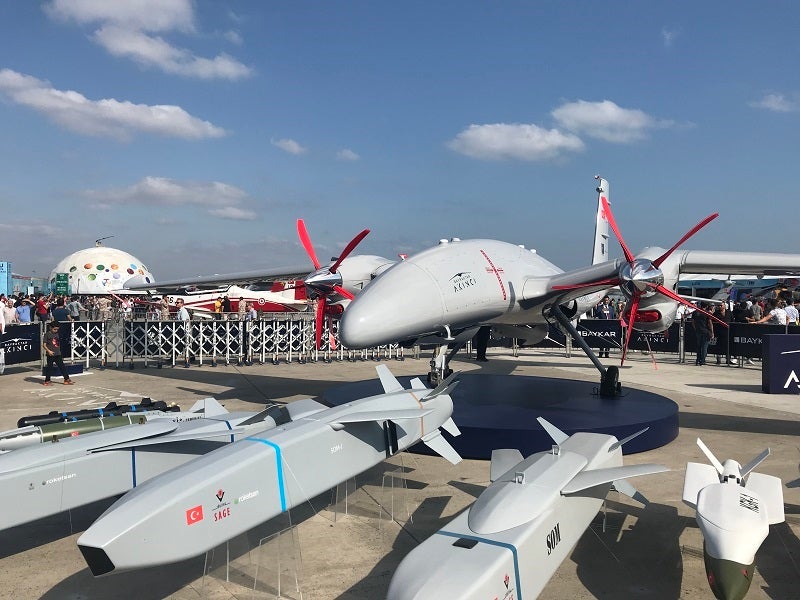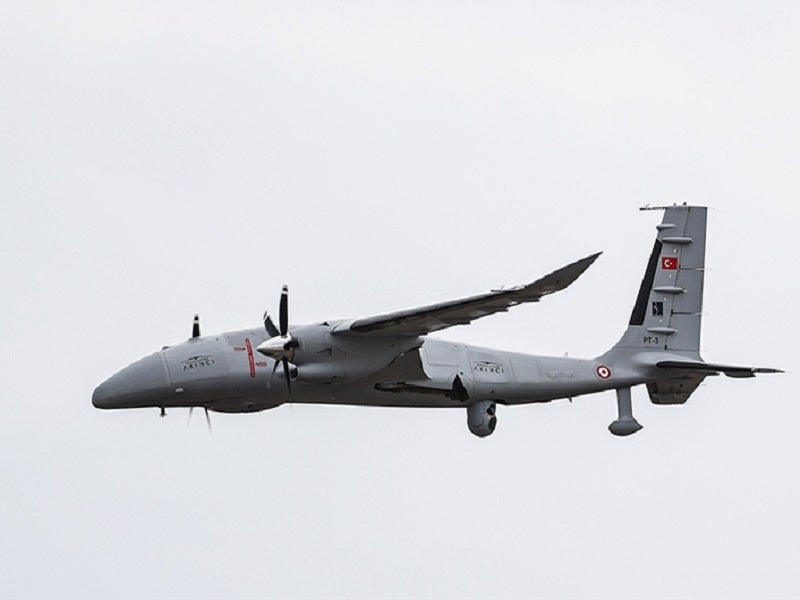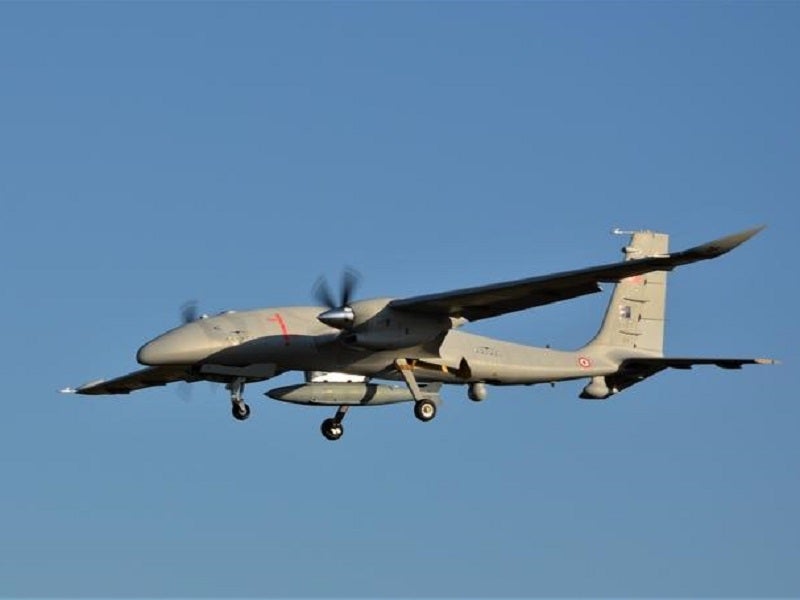Bayraktar Akinci is a long-endurance unmanned combat aerial vehicle (UCAV) developed by Turkish drone manufacturer Baykar, which was formerly known as Baykar Makina.
Designed to operate with different ammunition configurations, Bayraktar Akinci allows the company to upgrade its unmanned aerial vehicle (UAV) technology as per future requirements. The drone is the successor of Bayraktar TB2 Tactical UAV and serves as a leading variant in its class.
The hi-tech unmanned aircraft has been designed to perform various operations supporting fighter jets. It is equipped with dual satellite communication systems, air-to-air radar, electronic support systems, collision avoidance radar and synthetic aperture radar.
Bayraktar Akinci development details
Baykar unveiled the drone at the TEKNOFEST Istanbul Aviation, Space and Technology Festival in September 2019. First engine test of the vehicle was performed in September 2019, while the maiden flight was completed in December 2019.
The unmanned aerial vehicle will serve the Turkish security forces in both air-to-ground and air-to-air attack missions. Akinci UCAV’s first prototype PT-1 made its second flight in January 2020 and landed at the Corlu Airport Base Command in Tekirdag province for further testing in May 2020. PT-2, the second prototype, completed its testing in August 2020, followed by a developed system identification test in March 2021.
The first flight of the Bayraktar Akinci’s third prototype was successfully completed in March 2021. The Akinci UCAV successfully completed its first firing test in April 2021. Developed locally by Turkish weapons manufacturer Roketsan, the munitions that were used during the testing included laser-guided smart micro munitions (MAM), namely MAM-T, MAM-C and MAM-L.
The flight test for the first mass-produced Bayraktar Akinci UCAV was completed in May 2021. The unmanned system was delivered to Turkey in August 2021.
Baykar signed first export deal for the UCAV in January 2022. It is expected to deliver the ground systems and the Akinci UCAV to the customer by 2023.
Design and features of Bayraktar Akinci UCAV
The Bayraktar Akinci UCAV has a fault tolerant system architecture and a cross redundant ground control station architecture. It features uniquely designed fuselage and wings for enhancing its ability to carry a variety of payloads. It can perform operations that are conventionally performed by fighter jets.
The combat drone has a length of 12.2m, height of 4.1m, wingspan of 20m, and a maximum take-off weight of 5,500kg. It has the capability to take-off and land on a runway.
Flight control and avionics
The combat UAV is equipped with a triple redundant flight control system. The dual artificial intelligence (AI)-powered avionics system integrated into the platform helps in improving signal processing, sensor fusion and situational awareness in real time. Advanced features of the Akinci UCAV include fully-automatic and semi-automatic flight modes, as well as unique flight control and avionics architecture.
Domestically developed satellites can be used to control the combat drone. The drone uses advanced AI features to collect and process data received from onboard sensors and cameras. The sensors and actuators are highly redundant.
The AI system can determine key details pertaining to the aircraft such as the angle of roll, stand up, and orientation.
Sensor payloads on Akinci UCAV
The drone has the capacity to carry a maximum payload of 1,350kg including simultaneous electro-optic/infrared/laser designation (EO/IR/LD), multi-mode active electronically scanned array (AESA) radar, and signals intelligence (SIGINT) system.
Weapon payloads on Bayraktar Akinci UCAV
The UCAV will be fitted with different weapon payloads such as laser guided smart munitions, missiles, and long-range stand-off weapons.
The weapon payloads that can be carried by the drone include Cirit missile, mini smart munition Bozok, MAM-L (thermobaric), MAM–C (high-explosive), long-range anti-tank missile system (L-UMTAS) missile, MK-81, MK-82, MK-83 guided bombs (JDAM). The UCAV can also be armed with Gokdogan and Bozdogan air-to-air missiles, wing-assisted MK-82 guided bomb, and SOM-A stand-off missile.
Ground control station
The ground control station utilises triple bands to implement both line of sight (LOS) control and video transmission, while beyond line of sight (BLOS) control and video transmission of the drone is enabled through satellite communication (SATCOM).
The drone supports BLOS operations through global satellite networks and attendant ground data terminals.
The ground control station features various components including NATO specification shelter systems, tactical radio systems, intercom systems, multi-function pilot console, radar, and payload operator consoles.
Engines and performance
Akinci is powered by two turboprop engines which can generate a power output of 450hp each. An option to install 750hp engines or locally made 240hp engines is also available.
The unmanned aircraft can burn jet-A1 and JP-8 fuel types. The upward thrust is imparted by turboprop with five-blade propeller.
The unmanned vehicle can achieve a cruise speed of 150kt and a maximum speed of 250kt with an operational range of 5,000km and an endurance of up to 20 hours.
Operational altitude and maximum altitude of the UCAV are 30,000ft and 40,000ft, respectively.






